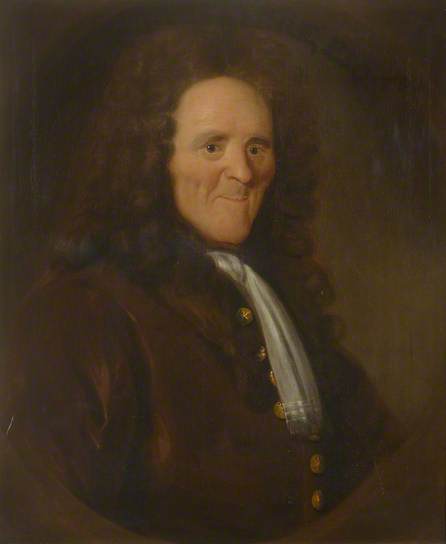In 1685 Louis XIV revoked the Edict of Nantes that had allowed Huguenots to practice their religion unmolested. It caused many talented professionals to flee the country. Among them was Paul Bussière (or Buissière), a Huguenot medical practitioner who first went to Copenhagen and then to London, where he developed a successful practice. Remembered for advancing medical education, he was one of the first to introduce a course of lectures on anatomy and physiology. In 1700 he was admitted to the Royal Society and later became one of its counselors. In 1729 he was elected governor of the French Hospital in London, and in 1737 was one of the physicians called in consultation when Queen Caroline was dying from a ruptured strangulated umbilical hernia.
Dr. Bussière contributed several learned papers to the Royal Society in London and to the Academy of Sciences in Paris. He published two books. His interests ranged from the role of the foramen ovale in the fetus, to the anatomy of the heart and blood vessels in the American tortoise. His otherwise rather uneventful biography has been enlivened by the story of how he attended on the British cabinet minister Robert Harley, as well as on the man who stabbed him, the French libertine Antoine de Guiscard.
Tall, handsome, and wealthy, Guiscard was a Catholic priest living in the south of France during the uprising of the Protestant peasants known as the Camisards. Though often claiming to have been a brave soldier, he was in fact a libertine living riotously and gambling heavily, reportedly having a fancy for little boys and being involved in several murders, abductions of noble women, and even ravishing nuns. Obliged to flee France, he convinced the highest authorities in Britain that he had heroically defended the Camisards and had the knowledge and ability to aid England to stage an invasion of France. At one time he even had access to several cabinet ministers and generals as well as to the King. When his credibility plummeted and he ran out of money, he seems to have contemplated switching sides as a double agent. Brought before the Privy Council on a charge of treason, he drew out a penknife and stabbed the cabinet minister Robert Harley, who may have had in his possession papers documenting his treasonable activities. The knife struck an ornate gold ornament the minister was wearing, causing but a slight wound. Dr. Bussière was called to attend on the minister, but Guiscard sustained serious injuries from the people trying to subdue him. Taken to Newgate prison, he also was attended by Dr. Bussière but died from his wounds within a few days. After his death the jailer pickled his body and exhibited it to visitors for an admission fee of one penny.
Robert Harley lived to be made Earl of Oxford and Knight of the Garter. The current Harley Street, where successful medical practitioners have their practices to this very day, commemorates not his memory but that of a later Lord Mayor of that name. Dr. Bussière practiced medicine until he was almost eighty years old and was regarded one of the most accomplished physicians of his time.
Reference
Peter Jones: Antoine De Guiscard, ‘Abbé de la Bourlie’, ‘Marquis de Guiscard’. Electronic British Library Journal, 1982.
 |
 |
| Paul Buissiere (1650–1739). unknown artist. The Royal Society Supplied by The Public Catalogue Foundation. Source | From An Anatomical Description of the Heart of Land Tortoises from America. Paul Bussiere. 1753. Photo from Flickr. |
GEORGE DUNEA, MD, Editor-in-Chief
Spring 2020 | Sections | Physicians of Note

Leave a Reply